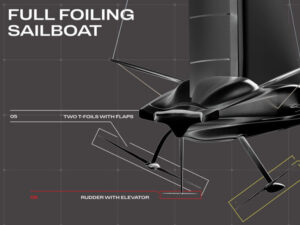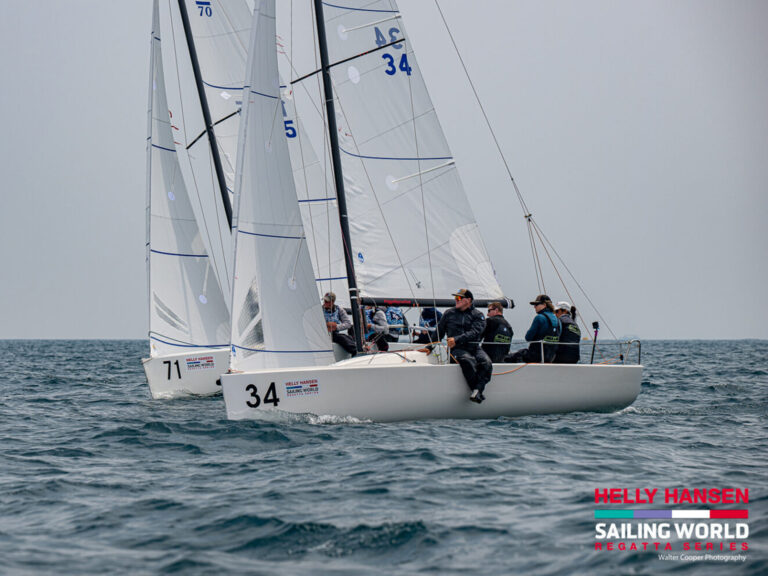
Louis Vuitton Cup: Race 1
And so it began. At 12:15 on July 7, the non-opener race of the 30th Louis Vuitton Cup, Emirates Team New Zealand sheeted in its 140-foot wing and tore across the starting line at 30 knots—two seconds late according to the official time on the screen—riding on their port daggerboard with bows pointed toward the shoreline. They crossed alone, of course, racing the ghost of their Italian competitors who watched from shore in protest. After two laps of the racecourse (they selected this morning to sail the “long course”) and 45 minutes later, the exhibition was over. From my vantage point at Crissy Field, nearer to the starting marks and first turning mark, spectators marveled at the black boat as it passed by three times. Those with binoculars seemed to enjoy it even more.
With a patchy 16-knot breeze and flood tide the racecourse was fairly benign said skipper Dean Barker after racing. “It was really flat water, pretty straightforward conditions. We actually enjoy it when it’s windier, then you really start ripping downwind and can pull off some slick jibes—more is good for us,” he said. “Today we went through our paces and wanted to see how a typical day was going to work.”
Boatspeeds averaged in the mid to high 20s at the top of the course just inside the Golden Gate Bridge, but with more wind at the bottom near Alcatraz, speeds peaked into the high 30s (42.8 knots was the reported top speed). Once they latched onto a puff with some distance to rumble, the boat foiled beautifully, awing the crowds lined up at numerous vantage points along the waterfront. A few less-than-perfect foiling jibes kept the pace high, and only on the final approach to last turning mark did they slip up with a botched layline, resulting in two downspeed jibes. “We were talking early on in that last run that it was going to be really marginal, that we’d be jibing on boundary and it would be touch and go whether we’d make it,” said tactician Ray Davies. “We thought we’d see how it played out, it wasn’t ideal.
“It was soft and shifty at the top of the course. When it’s like that we just have to change gears a bit more so it’s more work for the guys coming into the top mark to adjust the wing settings to get the boat powered up through the lulls, but these boats like breeze so you’re hunting more for pressure than shifts most of the time.”
Gear shifting is constant in the AC72s he added, especially in the marginal conditions they experienced today. “We have a few modes: low and fast or put it on the wind and stay in favored current longer. Downwind we have a large scope of modes: low and slow or really high and fast, but the VMG difference between those modes is not too dramatic so we have quite a range to sail. We’re really still learning how to best use those modes around the course, and today was a good day for that.”
At the mixed zone following racing, Luna Rossa’s Max Sirena and Francesco Bruni were on hand to answer for their race boycott. “We will be sailing tomorrow,” said Bruni. “I hope we will be racing soon. It depends on the jury decision.”
With regard to his observation of the Kiwi’s performance on the day he said, “They’re very solid around the course and make few mistakes. They’re a reference point for all the teams. We have learned a lot in the last month and have huge improvements with the new boards and our rate of improvement is huge.
“We can beat them [Emirates Team New Zealand]. Maybe not tomorrow, but in two days time.”
And here’s how ETNZ saw their day on the water:
Watch a replay of the first race.
View photos from the first race.









